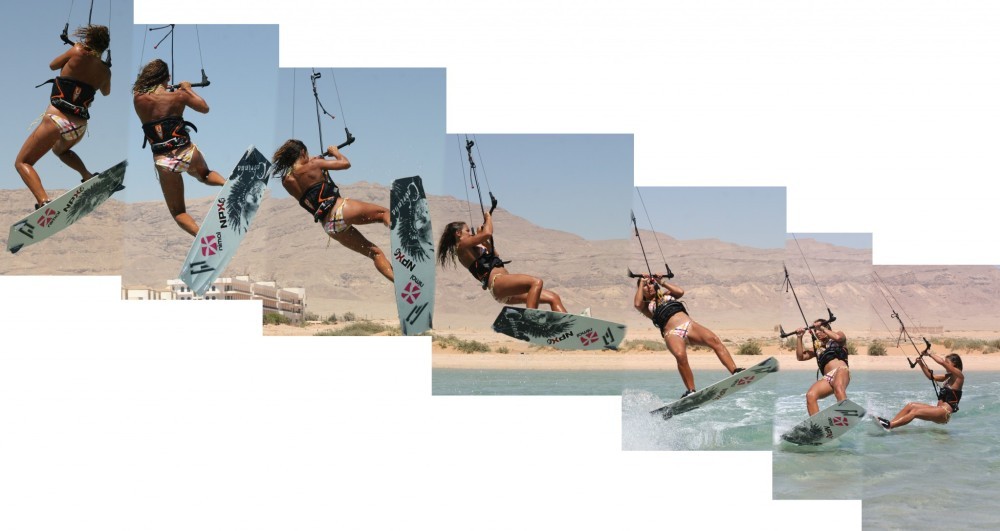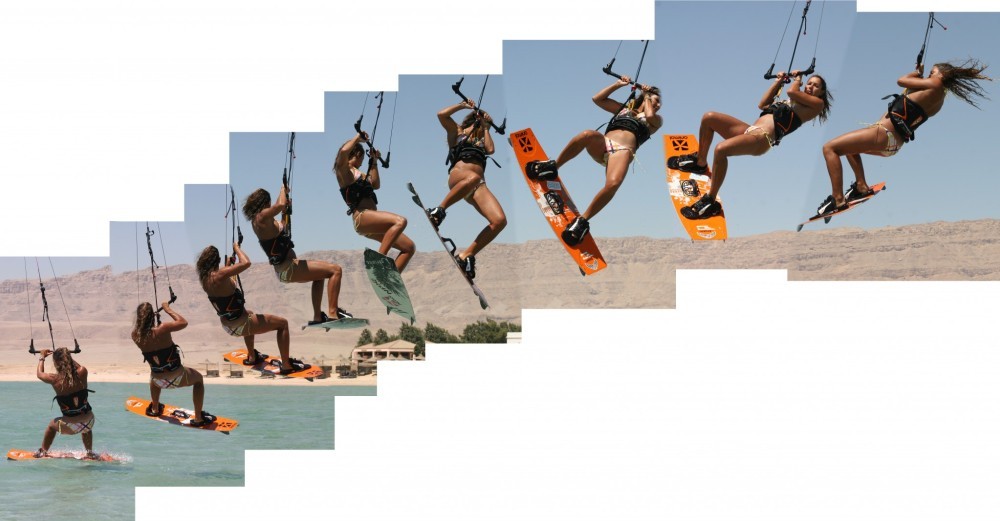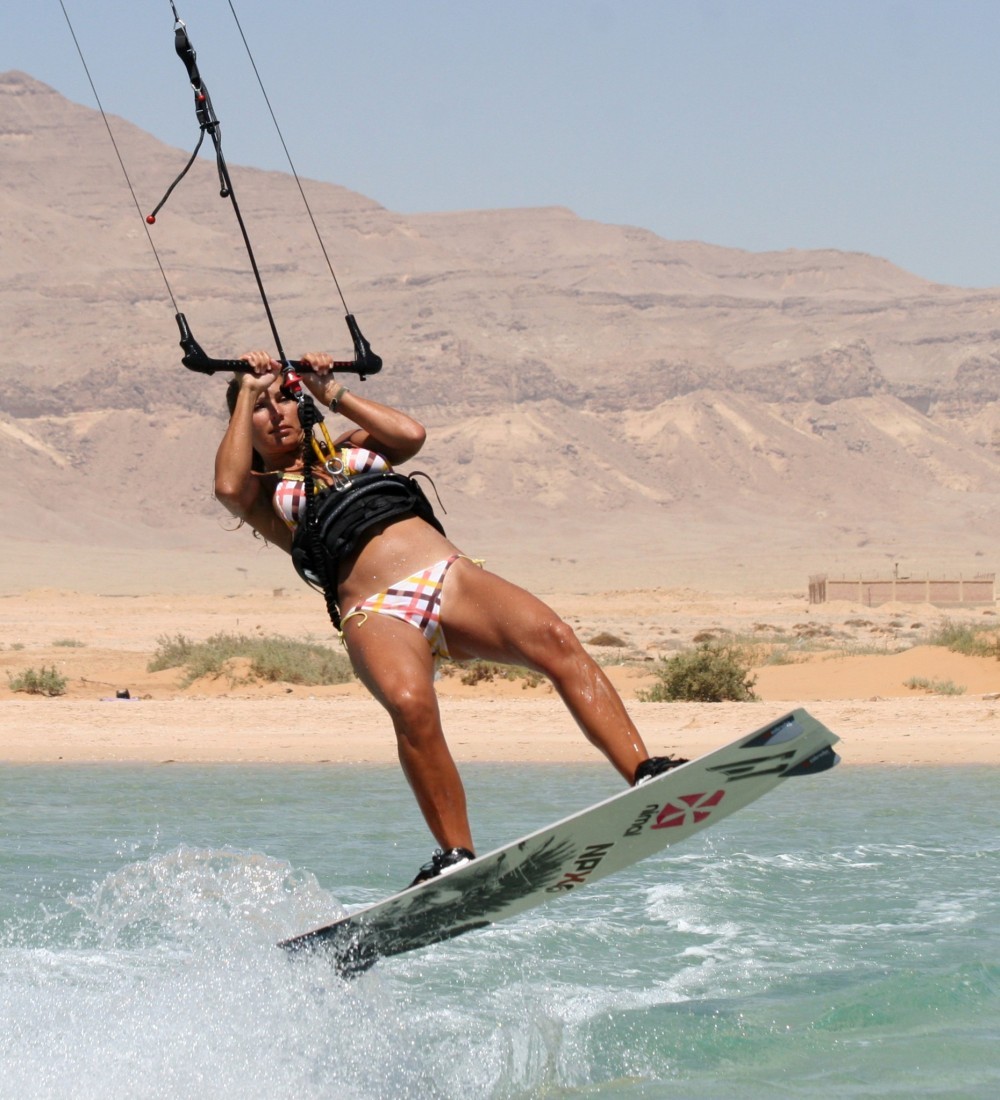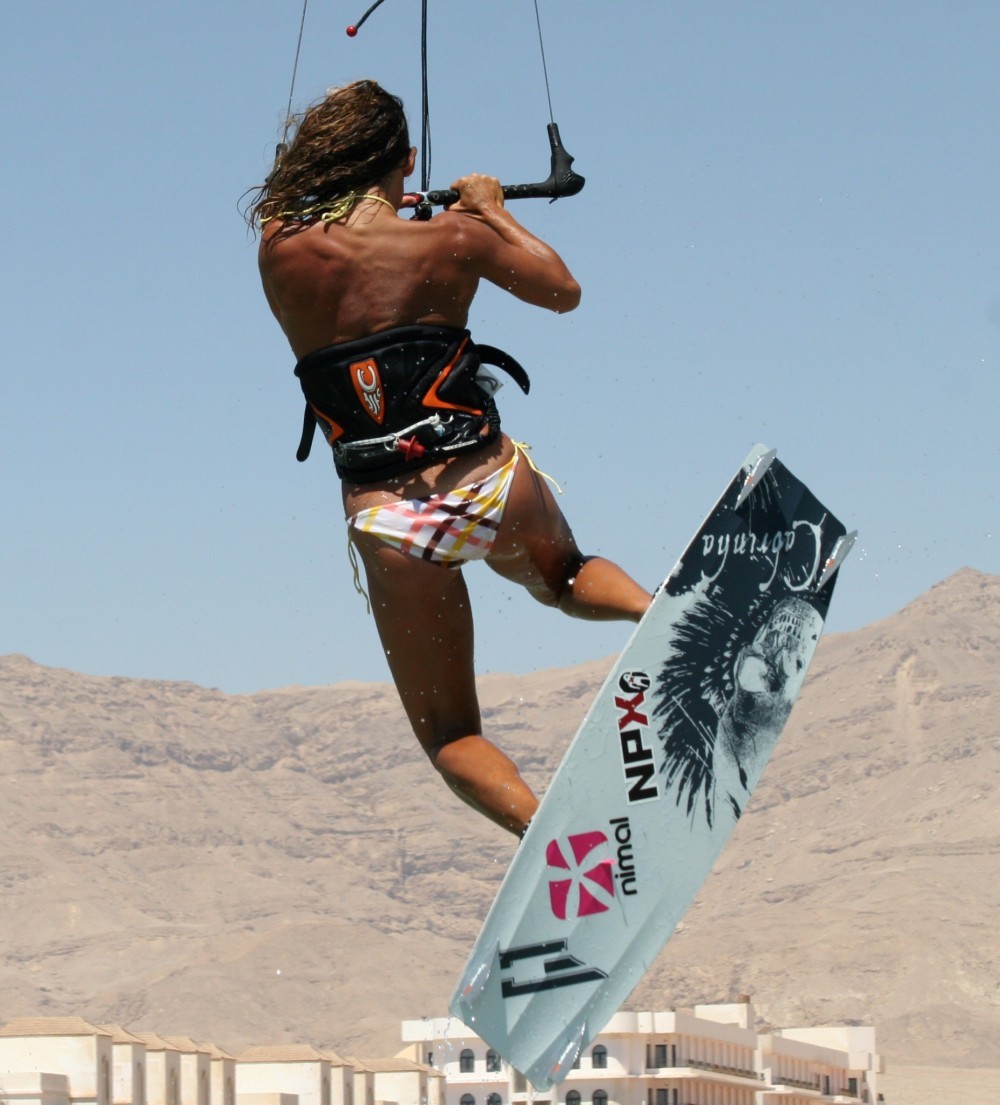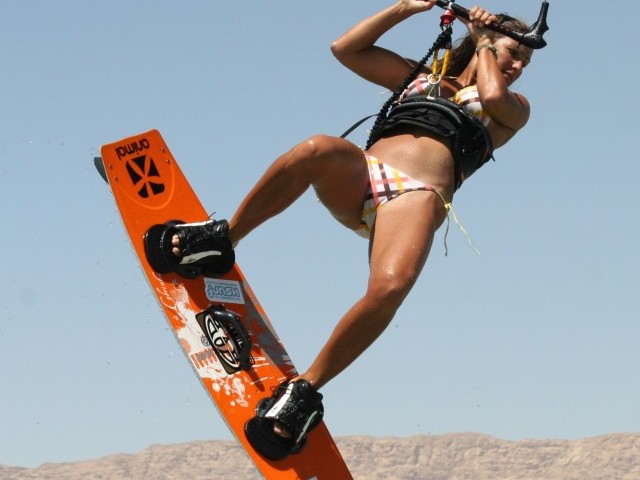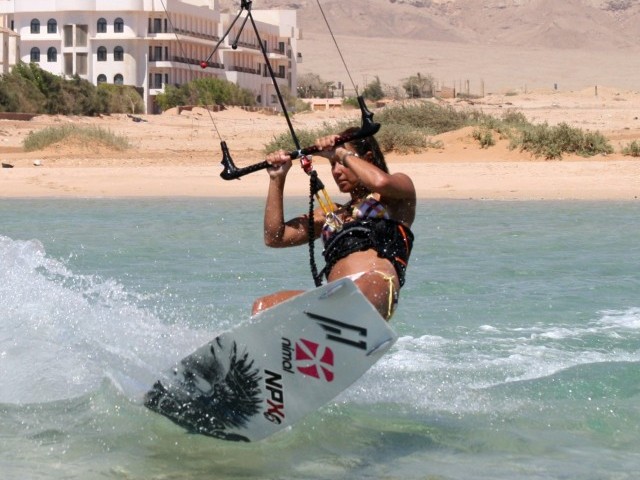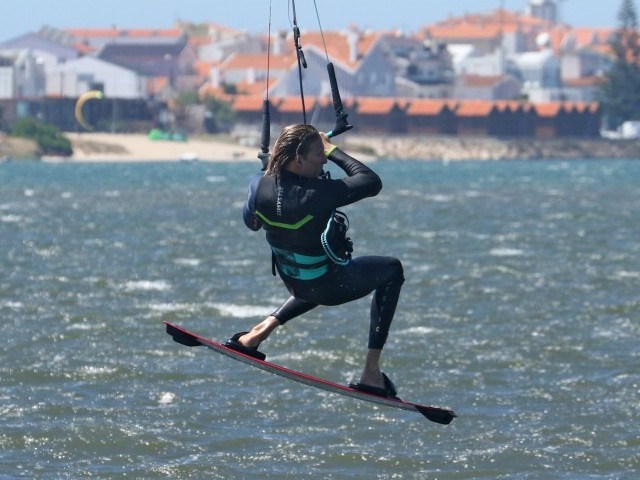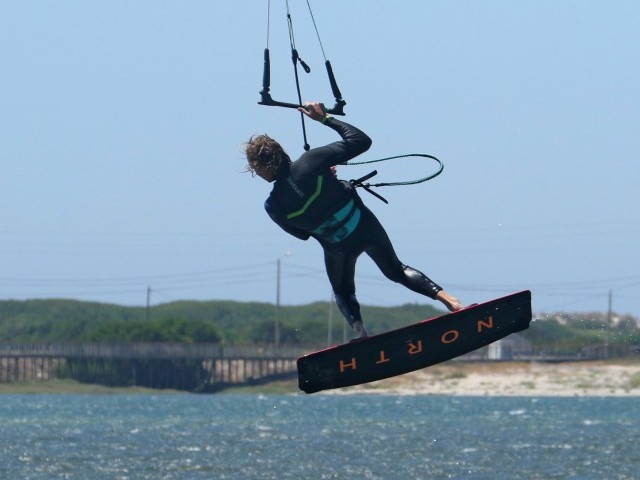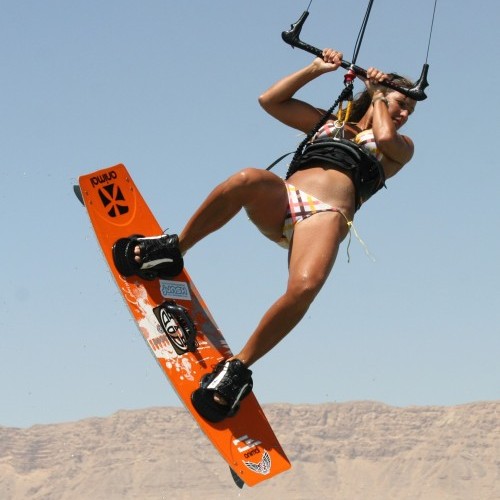
Double Back Loop
Technique / Intermediate
Introduction
Lets start with the potential simplicity of the double back loop. You should only really being going for this if you can already do a jumped back loop, and if you can, it’s merely a matter of getting an extra rotation in under your kite before landing. Surely can’t be that tricky. What’s more you don’t need to be getting mega air to slip the extra 360, nor do you need to rotate faster than the now legendary Mr M Jackson.
Hang Time
The trick in getting around is all down to your basic jump as opposed to throwing yourself into an uncontrollable series of back loops. In Video 1 you can see Karine literally floating around a double. It’s this floaty hang that you need.
Now if you went out on the water and tried to jump as high as possible the chances are you would send the kite back really hard. This would get you your height. Then to stop yourself from falling out of the sky you would redirect the kite back above your head to keep you hovering up there. Finally for a really good landing you’d dive the kite hard, and before pulling you downwind the kite would give you a little bit of secondary lift. These three stages are often marginally ignored when you start rotating, as your orientation goes out the window. Whilst learning you can break it down into concentrating first on your take off, then when that’s working switching your attention to in-flight entertainment, and once that’s in the bag move onto your landing phase.
Take Off
Looking at Pic A you can see that as soon as Karine has taken off into her back loop she has already pulled quite hard on her front hand to make sure that the kite gets right back above her. As we all know only too well, it is very easy to get stuck on the back hand a tad (or more) too long. So a conscious effort to pull on the front hand as you take off will help. In Video 2, the slow-mo you can clearly see how Karine pulls hard forward as soon as she takes off.
In Flight Entertainment
In Pic B1 Karine has just finished her first rotation. Look closely at the bar and you can see that it’s pulled right in, hands to hips, so that the bar is pretty much parallel to the water. This has the double advantage of firstly positioning the kite above her head, and secondly keeping the back lines tight. Both these really help in getting the float.
Now have a gander at Pic B2 where Karine is almost halfway around her second rotation. The bar is still there, in and parallel to the water. So Karine is still floating. The great thing is you have less to concentrate on after your take off, so you can sit back and enjoy the in-flight entertainment of your world spinning past twice.
Landing
For the landing part in Pic C you can see how Karine is pulling on her front hand to dive the kite. She does this as soon as she can see where she wants to land. This will serve her and you well in two ways. As the kite starts to move it will generate power and give her a touch more lift and therefore time to come around. Secondly as the kite starts to dive the kite will pull Karine downwind, which stops her over-rotating as it quite literally pulls her out of the rotation and sets her up for an off the wind landing.
It is very important to give yourself a stable landing platform. So focus on dropping your legs underneath you so you can land standing on the board, rather than sitting upwind of it.
Practice
As always, a good step backward, will more often than not help the following few steps forward. First thing to do is have a go at a few jumps and try to feel the kite, keep your legs up and try and hold the float as long as possible. Next up try the same with a back loop. If you are jumping well, you’ll almost feel that you need to slow your rotation down, as you’re prone to over-rotation due to the extra “time” in the air.
A Tale of Two Halves
Finally you’ll need to commit to giving your spin a gentle pick up. The aim being to get your first rotation done on the way up, so that you can do the second whilst you’re up there, or on the way down.
To get this extra spin you’ll need to attack the take off, as Karine is doing in Pic D. On a single back loop the aim is to jump up, whereas here you need to carve the board hard up into wind just as you feel the kite lifting. This movement comes from your legs and hips, not you head. As you carve around turn your hips and force you back heel down into the water, encouraging the board to turn through the wind.
Realistically by the time you take off you will have already done half a back loop, so you will finish it before you reach the apex of your jump. As long as you keep the bar in, you’ll keep floating and turning. If you let the bar out as you feel yourself coming round to finish the first rotation, it’s proof that there’s room for a second….
Final Tips
As a final thought before trying there are a couple of things that will make this even more achievable. Try it on a big kite in big kite weather first. A 12m or above has float in its DNA. Sure you won’t jump as high, but you’ll have hang time and won’t feel that you’re dropping from the sky as you come down. Don’t send the kite too hard. You need to get enough height but if the kite rips you off the water aggressively you’ll be less balanced and therefore less likely to trust yourself to keep the bar in.
Following Sequence 1
- Pic 1. As per a normal jump or back loop Karine has sent the kite back and carved hard against the moving kite, resisting with both legs.
- Pic 2. As she takes off, Karine leans back and keeps the board in contact with the water, turning it up into wind even harder and starting her rotation a little bit more forcibly than normal. You can see she has not thrown her head around into the rotation but instead has concentrated on making sure the kite gets back above her by pulling on her front hand.
- Pic 3. On her way up Karine now has the bar pulled right in, hands to hips. The kite will now lift her. If she didn’t have the height she could bring her legs right up to speed up her rotation.
- Pics 4, & 5. As Karine turns through her rotation she keeps the bar in and parallel to the water. This way she still climbs and floats.
- Pic 6. This is the classic moment where most folk let the bar out and allow themselves to fall into a slightly over-rotated single.
- Pic 7. One down, one to go. Karine does not focus on the water in front of her but rather lets herself go with it. If you find you’re slowing down just throw the head around over your front shoulder and bring the back knee up to speed up the second rotation.
Following Sequence 2
- Pic 8. Karine has lifted her legs to speed things up.
- Pic 9. Half way around the second loop and the bar is still where it should be. With the kite above her Karine will just keep rotating around her lines, just like a child on a rope swing.
- Pic 10. To make sure she gets all the way around Karine turns her head and looks over her shoulder.
- Pic 11. This enables her to spot where she would like to land. As soon as she can see the landing zone in front of her Karine dives the kite by pulling hard on her front hard.
- Pics 12 & 13. The kite pulls Karine around the final part of her loop. Karine continues to keep her eyes on the landing pad and keeps pulling on her front hand.
- Pic 14. As Karine drops down she keeps the bar pulled in. This way she’ll have control of the kite and touch down gently.
- Pic 15. Karine lowers her back foot for a tail first landing, and lets the board drop underneath her, so that she has something to land on.
- Pic 16. Claim it and enjoy. Karine will get herself balanced and comfortable before she worries about untwisting the lines.
Common Problems
The most common issue here is trying to throw your head and shoulders into an uncontrollable spin. By doing this it’ll be really hard to judge your landing and control your kite. Get the spin from you board and hips.
Keystones
- Edge hard right up into wind
- Redirect kite immediately
- Hands to hips
- Spot landing during 2nd rotation
- Dive hard
This technique article was in Issue 16 of IKSURFMAG.
Related
By Christian and Karine
Christian and Karine have been working together as a coaching team, running improver to advanced kitesurfing clinics since 2003.




